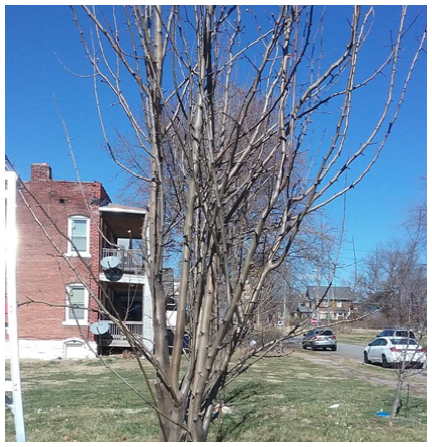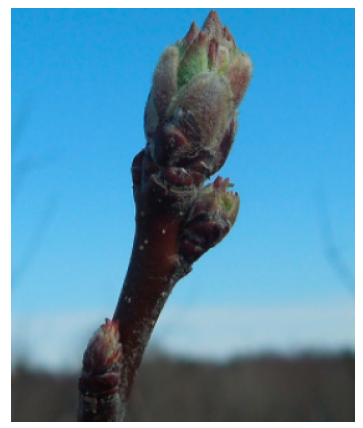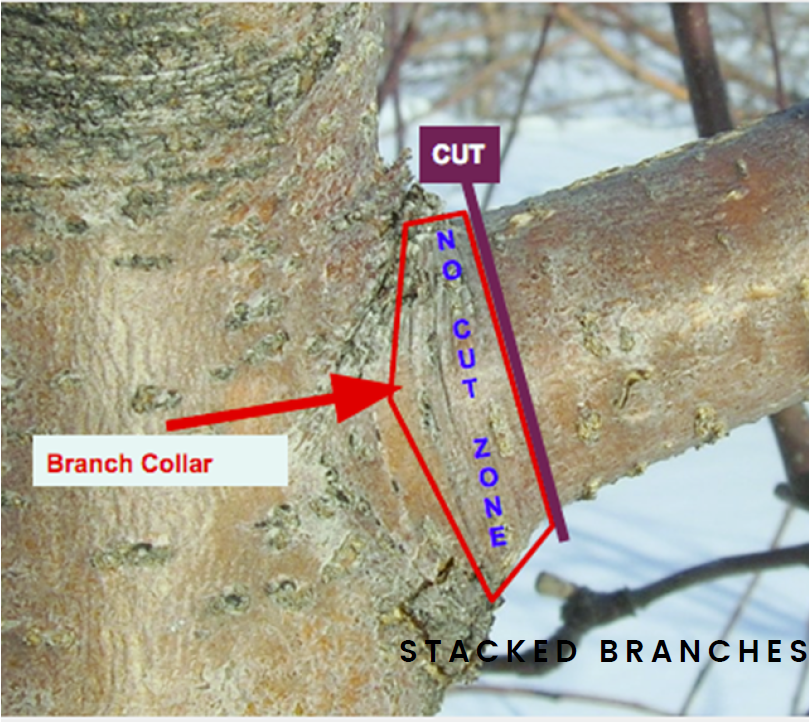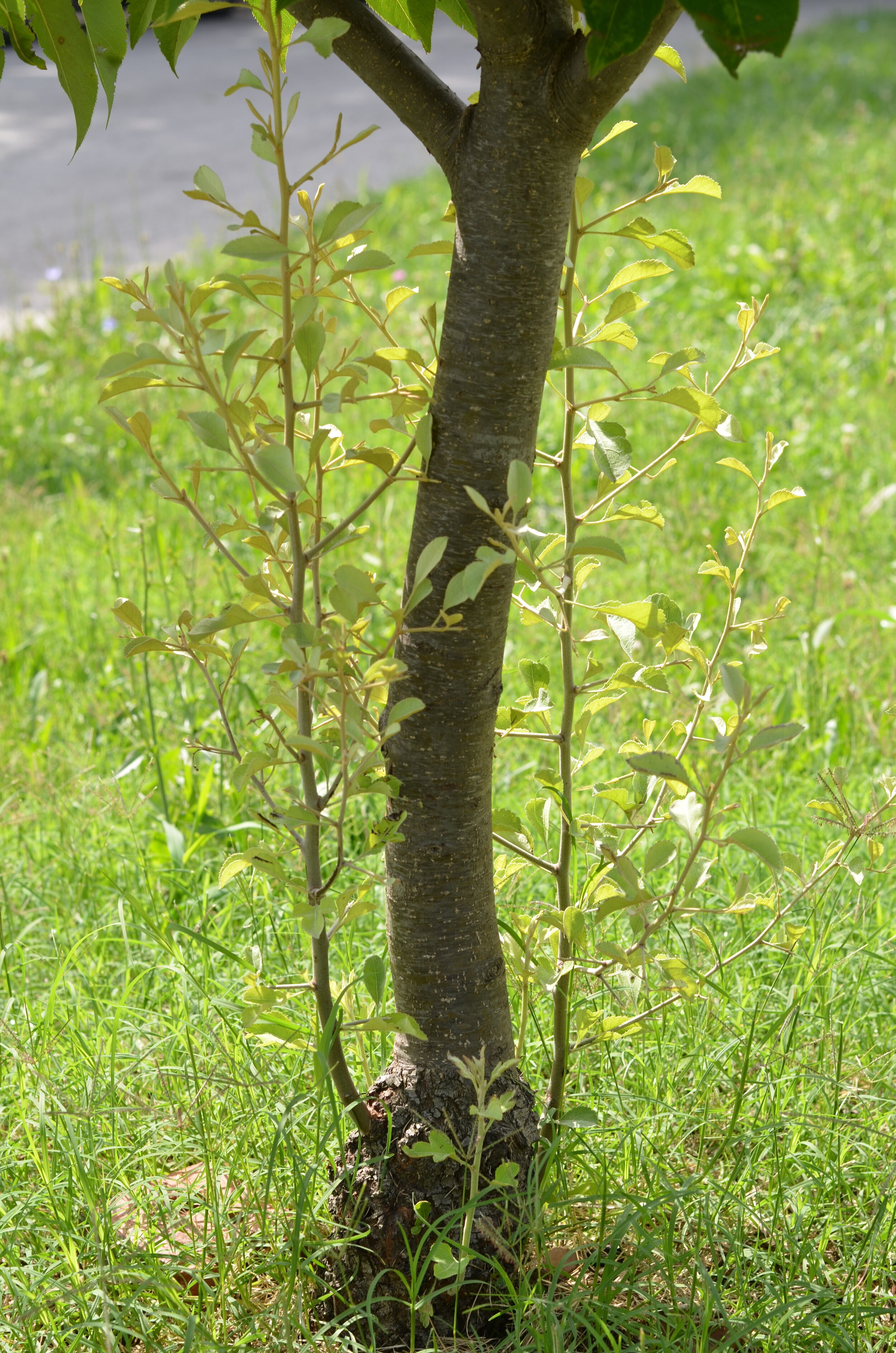While intimidating for most, proper pruning of fruit trees in the winter ensures healthy growth and bountiful harvests. For region-specific information, please contact your local Giving Grove affiliate. If you would like more information like this sent straight to your inbox, consider subscribing to The Serving, The Giving Grove’s quarterly newsletter.
An unpruned tree is unlikely to produce fruit.
Why Prune Fruit Trees?
Remove dead, Diseased, and Damaged
Removing dead, diseased, and damaged wood helps prevent the spread of disease and infection in trees.
Tree Structure
The appropriate structure will complement the tree's natural growth habits and allow the tree to support a full fruit load.
Prune for Sunlight and Air Flow
Opening the tree's interior to sunlight helps with flower bud development and more even ripening of fruit. Air, similarly, needs to be able to move through your tree. Humidity can build up in the interior, which spreads disease.
When to Prune Fruit Trees:
Dormant pruning should take place before buds begin to swell. This usually means late January through early March. Most tree diseases are dormant during winter limiting their spread. By waiting for the late January to early March time frame, the tree will heal as it starts to wake up and grow in the spring. Avoid pruning during precipitation to prevent the spread of disease and rot.
Do not prune in the fall or early winter (October through December). The tree does not have time to heal before cold temperatures arrive.
Dormant pruning should happen BEFORE trees begin to bud.
Fruit Tree Structures
Not all trees have the same structure. It is important to follow the appropriate growth pattern to best support your trees’ health and fruit production.
Central Leader
Central leader fruit tree structure
For apples and Asian and European pears, this is the main form that is followed. A strong central leader growth habit typically has 3 tiers of branches called scaffolds at maturity. These scaffolds usually consist of 3-5 branches reaching out from the central leader roughly equally spaced.
Branching should start about 30-36" off the ground, with each scaffold having its branches grouped within about 15”. There should be another 15” without major branches before the next scaffold. Avoid stacking branches as they will shade each other out.
Examples of scaffolds:
Scaffold 1: 30-42” above ground (2.5-3.5’)
Scaffold 2: 54-72” above ground (4.5-6’)
Scaffold 3: 90-108” above ground (7.5-9’)
Modified Central Leader
While the central leader method is preferred for pears and apples, fruit trees are known not to cooperate. A modified central leader will do the job, and many apple trees fall into this category. Use the same scaffold system as a regular central leader.
Open Center or Vase
A vase or open center is used to encourage trees to spread branches allowing more light into the interior. Branching should still start around30-36" off the ground but should split into several different directions. This method is often used with stone fruit, primarily peaches.
Equipment Needed
Pruning Saw (Silky, Corona)
Orchard Ladder
Pole Pruner (Jameson, Corona)
Loppers (Corona)
By-Pass Hand Pruners (Felco 2)
Limb Spreaders
70% Isopropyl Alcohol & Cloth
Tie Tape
Fruit Tree Pruning Techniques
Limbs Less than 1” Wide
To remove a branch less than 1" in diameter, you can make a single cut with your bypass hand pruners just outside the outermost ring of the branch collar (swollen area of compressed rings of bark tissue at the base of a branch). Do not cut through the branch collar. The tree will not heal properly.
Avoid leaving a stump when making pruning cuts. If more than1/4" of wood is left outside the branch collar, the wound will not heal correctly. This increases the risk of attacks by insects and diseases.
Pruning technique for pruning limbs less than 1 inch wide.
Three Cut technique for pruning limbs larger than 1 inch.
Limbs Greater than 1” Wide
To remove a branch greater than 1” in diameter, a three cut approach is best. This method requires a pruning saw.
The first cut should be made on the underside of the branch a few inches from the branch collar and go about 1/3 of the way through the branch. This prevents the weight of the branch from tearing the bark and branch collar.
The second cut is made a couple of inches farther from the branch collar to remove weight. Cut all the way through the branch on this cut.
The third cut should be the same as for a small branch, just outside the branch collar.
Fruit Tree Branch Angles
Good branch angles are between 45° and 60°. Branch angles less than 30° are weaker, with bark getting pinched between the branch and trunk. This is easily split with the weight of a decent fruit load. This issue is most common with Asian and European pears.
Observe the grain structure of a fruit tree with too tight of an angle (left) to a branch angle that is ideal.
Fruit Tree Shaping Methods
Spreading, bending, tying, splinting: Using limb spreaders, hanging weights, and tying branches all help to alter the branch angle of a limb. These are easiest to use while a branch is still supple (usually the first 1-3 years of growth). Splinting a tree with bamboo and tie tape can help straighten a crooked tree and reestablish a central leader.
Remember: These are not permanent fixtures in your tree. They need to be taken out or adjusted about every 9 months.
Fruit Tree Thinning
To allow more light and air into the interior, cut small side branches back to their point of origin on the parent branch. This is practiced not only on twigs but on crowded limbs.
The European pear pictured was approximately 2 years old at the time of this pruning. Without pruning, the tree becomes chaotic with lots of vertical growth; pruning and limb spreading allows for growth to be directed into a few branches that will be our scaffold. By eliminating quick-growing, mostly vertical growth, the tree can put more of its energy into strong scaffolds.
Fruit tree before thinning.
Fruit tree after thinning.
Fruit Tree Tipping
To induce horizontal branching, remove the terminal bud to a lateral bud pointing in the direction you want your branch to grow. Make the cut 1/4" above the lateral bud and at an angle parallel to the bud's direction.
Fruit Tree Watersprouts
Watersprouts are long vegetative growth that runs parallel to the central leader. These branches draw energy away from fruit-producing areas of the tree, shade out the important scaffold branches, and often never produce any fruit.
Watersprouts are not productive and should be pruned.
Fruit Tree Rootstock Suckers
Rootstock suckers grow from below the graft union and 'suck' energy away from foliar and fruit growth. These can be removed at any time of year.
Blackberry pruning: Before (left) and After (right)
Blackberry Pruning
In dormancy, blackberry canes should all be tied to the same line as the trellis. In early March, just before their buds break, cut lateral growth on these canes back to 12-15".This ensures nutrients can travel to the end of the canes, giving you larger and more flavorful berries. Prune out any dead wood that was not removed last summer.
New canes emerging in the summer should be tied to the opposite line of the trellis and tipped at 6-8" beyond the line. These new canes will be next year's fruiting canes.
Raspberry Pruning
Raspberries should be taken back to the crown (1-2" above the ground) in February. This can be done using hand pruners or with a lawnmower with the deck set as high as it will go.
Quick Pruning Notes
Apple (Malus)- Preferred form depends on variety, but modified central to central leader works for most. Work on scaffolds (tiers) Spreading/bending branches is recommended. Thin fruit to 5” apart.
Pear (Pyrus)- Central leader or modified central leader. Spreading/bending branches is necessary. Lateral branches are equally spaced around the trunk with 6-8” between. Thin fruit to 5” apart.
Asian Pear (Pyrus)- Central leader or modified central. After 5 years, fruit buds tend to produce inferior fruit, and new laterals are encouraged to take the place of older wood.
Peach (Prunus Persica)- Last to prune in the dormant season. Remove up to 50% each year. Thin out twigs under 12”, and crowding twigs. Proper fruit twigs are 12-18” and pencil-thin. Open-center form. Thin fruit to 8” apart.
Cherry, Tart (Prunus Cerasus)- Open-center or modified central leader.
Cherry, Sweet (Prunus Avium)- Modified central leader. Head leader to create side-branching.
Cherry, Bush (Prunus x kerrasis)- Use thinning cuts for a less bushy effect. This increases light and air circulation to the interior of the plant. Remove stems that are 4-6 years old 1-2" above ground level, as they are less productive.
Jujube (Zizyphus)- Train as multi-trunk branching at 3-4’ off the ground. Minimal pruning except to limit the height or crossing limbs.
Apricot (Prunus Armeniaca)- Open-center or modified central leader. Thin fruit to 2” apart if necessary.
Pawpaw (Asimina)- Minimal pruning needed. Keep root suckers at bay. The tree has a central leader, spread laterals to help with sunlight.
Persimmon (Diospyros)- Modified central leader. Continue to work the top to keep the tree shorter.
Fig (Ficus)- In spring, after bud break (late April), remove branches that have died; this may mean down to the ground. Remove smaller trunks and excess growth throughout the season allowing for 10-12 main trunks.
Nuts:
Pecan (Carya)- Central leader. Make sure branching is pruned off until the central leader is at least 5’ tall. At this point, make sure branches have a good angle of 45-60˚.
Chestnut (Castenea)- Central leader. Make sure branching is pruned off until the central leader is at least 5’ tall. At this point, make sure branches have a good angle of 45-60˚.
Hazel/Filbert (Corylus)- Multi-trunk with 5-9 trunks. Keep suckers at a minimum.
















